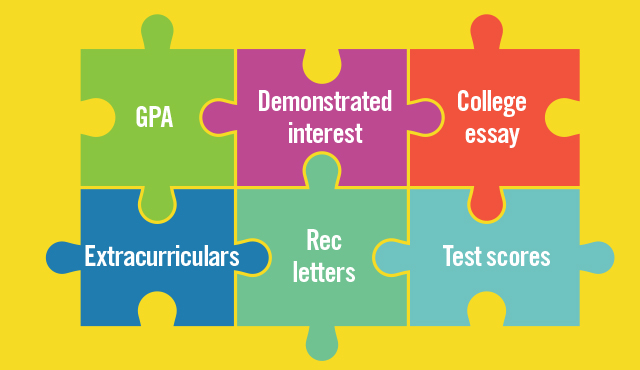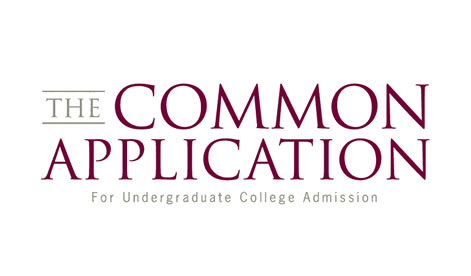I. Introduction
- Introduce the Common Application and its significance in the college admissions process.
- Highlight the complexity of college applications and the need for a streamlined approach.

The Common Application stands as a beacon of convenience and efficiency in the complex landscape of college admissions. Introduced in 1975 with a modest consortium of 15 colleges aiming to simplify the application process, it has since evolved into a powerful, centralized platform embraced by over 900 institutions worldwide.
Introduction to the Common Application
In the intricate tapestry of college admissions, the Common App emerges as a unifying force, offering students a streamlined avenue to apply to multiple colleges with a single, standardized application. Its significance lies not only in its practicality but also in its transformative impact on how aspiring students navigate the labyrinthine journey toward higher education.
Significance in College Admissions
Simplifying the Application Process
The Common Application serves as a harmonizing agent, allowing students to complete one comprehensive application and submit it to various participating institutions. This eradicates the need for redundant form-filling and simplifies the often-daunting task of applying to multiple colleges.
Facilitating Holistic Evaluation
Beyond grades and test scores, the Common App nurtures a holistic approach to admissions. By incorporating sections for personal information, academic history, extracurricular activities, essays, and recommendations, it enables colleges to assess applicants in a more comprehensive light, considering their passions, experiences, and potential contributions to campus life.
Accessibility and Diversity
One of its most profound impacts is democratizing access to higher education. The Common App opens doors to a diverse array of colleges, spanning various geographies, sizes, and specializations. It empowers students to explore a myriad of institutions, fostering inclusivity and widening the scope of opportunities available to them.
Fostering Reflection and Self-Expression
Central to the Common Application are the essay prompts, providing a canvas for students to paint their stories, passions, and aspirations. These prompts encourage introspection and personal expression, allowing applicants to showcase their uniqueness beyond transcripts and test scores.
Conclusion
The Common Application stands as a testament to innovation in the college admissions landscape, reshaping the experience for both applicants and admissions offices. Its significance transcends mere convenience, playing a pivotal role in revolutionizing how colleges evaluate and engage with prospective students. As a gateway to opportunity, it not only streamlines the process but also amplifies the voices and stories of countless aspiring individuals striving for educational fulfillment.

II. What is the Common Application?
- Define the Common App: its purpose, origin, and the institutions that accept it.
- Discuss the sections of the Common App (personal info, academic history, activities, essays, recommendations, etc.).
What is the Common Application?
The Common Application, often referred to as the Common App, is a centralized platform designed to simplify the college application process for students applying to multiple colleges or universities. Initially launched in 1975 by 15 institutions, it has since grown exponentially and is now accepted by over 900 colleges and universities globally.
Purpose and Scope
The primary goal of the Common App is to streamline the application procedure, allowing students to complete a single standardized application and submit it to multiple participating institutions. This eliminates the need to fill out separate applications for each college, reducing redundancy and simplifying the process.
Components of the Common Application
The Common App consists of several key sections, each gathering essential information required by colleges during the admissions process:
- Personal Information: This section includes details such as name, address, demographic information, citizenship status, and background information.
- Academic History: Students provide information about their high school education, including grades, courses taken, GPA, and standardized test scores. This section aims to provide colleges with an overview of academic performance.
- Extracurricular Activities: Applicants list their extracurricular involvement, including clubs, sports, volunteer work, part-time jobs, or any other activities outside the classroom. This section offers insights into a student’s interests, passions, and contributions.
- Essays and Writing Supplements: One of the most crucial components, this section includes essay prompts that allow students to showcase their writing skills, personality, and unique perspectives. Colleges use these essays to understand the applicant beyond academic achievements.
- Recommendations: Applicants can request recommendations from teachers, counselors, or other individuals who can provide insights into their character, abilities, and accomplishments.
- Additional Information (Optional): This section allows students to provide any relevant context or information that might not fit into other parts of the application.
Holistic Approach to Admissions
The Common Application promotes a holistic approach to admissions, enabling colleges to evaluate applicants based on more than just grades and test scores. By offering a comprehensive view of each candidate’s academic achievements, extracurricular activities, personal background, and aspirations, it allows admissions officers to assess applicants in a more well-rounded manner.
Benefits for Students
- Efficiency: Simplifies the application process, saving time and effort for students applying to multiple colleges.
- Access to Diverse Institutions: Provides access to a wide range of colleges and universities, both domestic and international, that accept the Common App.
- Encourages Reflection and Personalization: The essay prompts encourage introspection, allowing students to express their unique stories and aspirations.
Conclusion
The Common Application serves as a vital tool in the college admissions process, offering a standardized and user-friendly platform for students to present themselves comprehensively to multiple institutions, thereby increasing their chances of securing admission.
III. Benefits of Using the Common Application
- Streamlining the application process for multiple colleges.
- Reducing redundancy and saving time for applicants.
- Allowing a holistic view of the student beyond grades and scores.

Benefits of Using the Common Application
The Common Application isn’t merely a convenient tool; it’s a catalyst for transforming the college admissions journey. Its adoption by numerous institutions worldwide brings forth a multitude of advantages for prospective students.
1. Streamlined Process
The Common App serves as a one-stop portal, simplifying the application process by allowing students to complete a single application form and submit it to multiple colleges. This efficiency significantly reduces the time and effort required for applying to numerous institutions.
2. Holistic Representation
Through its diverse sections encompassing personal details, academic history, extracurricular activities, essays, and recommendations, the Common App presents a holistic view of applicants. It enables colleges to evaluate candidates based on a broader spectrum, moving beyond grades and scores to understand the multifaceted nature of each applicant.
3. Diverse College Access
Embraced by a vast network of colleges and universities globally, the Common Application democratizes access to higher education. It empowers students to explore a myriad of institutions, encompassing various sizes, locations, and specialties. This accessibility widens the horizons of educational opportunities for aspiring students.
4. Enhanced Efficiency and Time Management
By eliminating the need to repeatedly fill out separate applications for different colleges, the Common App liberates students from logistical burdens. It allows them to focus more on perfecting their applications, essays, and ensuring accuracy, thereby utilizing their time more effectively.
5. Encourages Reflection and Personalization
The essay prompts embedded within the Common Application serve as catalysts for introspection and self-expression. They prompt applicants to delve into their experiences, values, and aspirations, fostering personal growth and allowing students to present their unique narratives to colleges.
6. Improved Communication and Tracking
The centralized nature of the Common App simplifies communication between applicants and colleges. It offers features for tracking application statuses, ensuring all necessary materials are submitted, and facilitating seamless interaction between students and admissions offices.
7. Equalizing Opportunity
Through its standardized format, the Common Application levels the playing field for applicants, irrespective of their background or location. It provides an equitable platform where students can present their qualifications, experiences, and aspirations without undue barriers.

Conclusion
The Common Application stands as a cornerstone in modernizing and simplifying the college admissions process. Beyond its convenience, its profound impact lies in fostering inclusivity, encouraging personal growth, and democratizing access to higher education, embodying the essence of opportunity and empowerment for countless aspiring students worldwide.
IV. Navigating the Common Application
a. Understanding Each Section
- Detailed breakdown of the personal information section.
- Importance of accurately entering academic history and achievements.
- Tips for showcasing extracurricular activities effectively.
b. Writing Compelling Essays
- Discuss the significance of the essay prompts.
- Strategies for crafting authentic and impactful essays.
- Importance of showcasing one’s personality and passions.
c. Securing Strong Recommendations
- How to select the right recommenders.
- Tips for guiding recommenders and ensuring quality letters.
Navigating the Common Application: A Comprehensive Guide
Navigating the Common Application can be a transformative experience for college-bound students. Its multifaceted nature demands a strategic and organized approach to ensure a compelling and comprehensive presentation of one’s qualifications and aspirations.
1. Understanding Each Section
a. Personal Information
Entering accurate personal details lays the foundation. Ensure clarity and precision in providing information regarding name, address, contact details, and demographic specifics.
b. Academic History
Thoroughly document academic achievements, including GPA, courses taken, and standardized test scores. Pay attention to accuracy and consistency in this critical section.
c. Extracurricular Activities
Highlight diverse involvements beyond academics. Provide context and depth, emphasizing leadership roles, long-term commitments, and personal passions.
d. Essays and Writing Supplements
Craft compelling essays tailored to individual prompts. Use this space to showcase personality, experiences, and aspirations authentically.
e. Recommendations
Select recommenders wisely and guide them on your aspirations and achievements. Ensure they can offer insights into your character and capabilities.
2. Strategies for Success
a. Start Early and Plan Methodically
Commence the application process well in advance. Create a timeline for completing sections, essays, and obtaining recommendations.
b. Tailor Applications to Each Institution
Customize essays and responses to institution-specific questions. Demonstrate genuine interest and alignment with each college’s values and offerings.
c. Seek Guidance and Review
Leverage resources such as counselors, teachers, or mentors. Seek their input and feedback to refine your application.
3. Avoiding Common Pitfalls
a. Procrastination
Avoid leaving sections incomplete or essays until the last minute. Begin early to alleviate stress and ensure a polished application.
b. Lack of Personalization
Craft essays and responses that reflect your unique story. Avoid generic or clichéd content that doesn’t showcase your individuality.
c. Overlooking Details
Thoroughly review each section for accuracy and completeness. Simple errors can detract from an otherwise strong application.
4. Emphasizing Authenticity
a. Be Genuine
Present an authentic portrayal of yourself. Don’t try to fit into a perceived mold; let your personality and experiences shine through.
b. Highlight Impact and Growth
Emphasize not just what you did but the impact it had and what you learned. Showcase growth and development through experiences.
5. Closing Thoughts
The Common Application is more than a form; it’s a canvas for students to paint a vivid picture of their academic prowess, personal passions, and aspirations. Navigating it effectively requires diligence, introspection, and a commitment to authenticity. By employing these strategies, applicants can ensure a compelling and genuine representation of themselves, increasing their prospects of standing out in the competitive college admissions landscape.
V. Common Mistakes to Avoid
- Overlooking details in the application.
- Procrastination and rushing through sections.
- Failing to personalize essays for different colleges.
Common Mistakes to Avoid in the Common Application
1. Procrastination and Rushing
- Issue: Waiting until the last minute leads to rushed applications, increasing the likelihood of errors and overlooking crucial details.
- Solution: Begin early, create a timeline, and allocate sufficient time for each section to ensure thoroughness and quality.
2. Ignoring Instructions or Requirements
- Issue: Failing to adhere to specific guidelines or word limits in essays and sections might result in rejection or overlooking essential aspects.
- Solution: Read instructions thoroughly. Pay attention to word limits, prompts, and formatting guidelines provided by each college.
3. Lack of Proofreading and Review
- Issue: Overlooking typos, grammatical errors, or missing information reflects poorly on an application’s professionalism and attention to detail.
- Solution: Review each section meticulously. Seek feedback from teachers, mentors, or counselors to catch any oversight.
4. Not Tailoring Applications
- Issue: Submitting generic applications without customizing essays or responses for individual colleges can weaken an application’s impact.
- Solution: Customize essays and responses. Showcase alignment with each college’s values, programs, and offerings.
5. Overwhelming Colleges with Information
- Issue: Providing excessive, irrelevant information can dilute the essence of an application, making it harder for colleges to discern key aspects.
- Solution: Be concise and focused. Emphasize quality over quantity in presenting achievements and experiences.
6. Disregarding Additional Information Sections
- Issue: Leaving the optional sections blank may miss opportunities to provide context or explain unique circumstances relevant to the application.
- Solution: Utilize optional sections wisely to provide necessary context or explanations, if applicable, without unnecessary information.
7. Misrepresenting or Exaggerating Achievements
- Issue: Falsifying or exaggerating accomplishments can undermine credibility and integrity, potentially leading to serious consequences.
- Solution: Be truthful and transparent. Highlight achievements authentically without embellishment.
8. Failing to Follow Up or Check Application Status
- Issue: Neglecting to track application status or follow up on missing documents can result in incomplete submissions or missed deadlines.
- Solution: Keep track of submission deadlines and required documents. Follow up to ensure all materials have been received by the colleges.
9. Not Seeking Guidance
- Issue: Not utilizing resources such as counselors, teachers, or mentors deprives applicants of valuable insights and feedback.
- Solution: Seek guidance and feedback from trusted sources to refine and strengthen your application.
10. Ignoring Self-Reflection and Authenticity
- Issue: Lack of introspection and authenticity leads to generic, uninspiring applications that fail to showcase the applicant’s unique identity.
- Solution: Reflect on personal experiences, values, and aspirations. Craft essays and responses that genuinely reflect your story and character.
Conclusion
Avoiding these common mistakes ensures a more polished and impactful Common Application. By steering clear of these pitfalls, applicants can present themselves more effectively, increasing their chances of standing out positively in the competitive college admissions process.

VI. Tips for Success
a. Start Early and Plan Ahead
- Importance of starting the application process early.
- Creating a timeline and sticking to deadlines.
b. Seek Guidance and Review
- Utilizing resources like counselors, teachers, or mentors.
- Importance of reviewing the application thoroughly before submission.
c. Showcase Authenticity and Passion
- Emphasize the significance of being genuine in the application.
- Highlight the importance of passion and enthusiasm in essays and activities.
Tips for Success in Completing the Common Application
1. Start Early and Plan Strategically
- Commence Early: Begin the application process as soon as possible to avoid last-minute stress and ensure thoroughness.
- Create a Timeline: Develop a detailed schedule outlining deadlines for each section, essays, and required materials.
2. Understand Each Section Thoroughly
- Read Instructions: Pay attention to guidelines, prompts, and word limits provided for each section.
- Provide Accurate Information: Ensure all details, including personal information and academic history, are accurate and consistent.
3. Customize Applications for Each Institution
- Tailor Essays: Craft individualized essays for each college, highlighting your alignment with their values, programs, and offerings.
- Address Specific Prompts: Address institution-specific questions or supplements with targeted responses.
4. Seek Guidance and Feedback
- Utilize Resources: Consult teachers, counselors, or mentors for advice and guidance throughout the application process.
- Get Feedback: Seek feedback on essays and application components to refine and improve your presentation.
5. Emphasize Authenticity and Reflectiveness
- Be Genuine: Present yourself authentically in essays and responses. Avoid attempting to fit into perceived expectations or molds.
- Showcase Growth: Highlight personal growth, learnings from experiences, and the impact they’ve had on shaping your aspirations.
6. Review and Revise Diligently
- Proofread Carefully: Thoroughly review each section for errors, typos, and clarity. Strive for polished and professional presentation.
- Revise Essays: Revisit essays multiple times, ensuring they effectively convey your voice and message.
7. Track Deadlines and Application Status
- Stay Organized: Keep track of application deadlines, required materials, and submission dates for each college.
- Follow Up: Monitor the status of your application to ensure all documents are received by the colleges.
8. Highlight Impact and Engagement
- Showcase Contributions: Emphasize your active involvement and meaningful contributions in extracurricular activities, clubs, or community service.
- Demonstrate Passion: Illustrate your passion for your interests or pursuits through impactful storytelling in essays.
9. Stay Calm and Manage Stress
- Maintain Balance: Balance application work with academics, hobbies, and personal time to prevent burnout.
- Practice Self-Care: Engage in activities that reduce stress and maintain mental well-being throughout the process.
10. Submit Early but Carefully
- Submit Ahead: Aim to submit applications a few days before the deadline to account for any unforeseen technical issues.
- Review Before Submitting: Double-check all sections and materials before final submission to ensure accuracy and completeness.
VII. Conclusion
- Recap the significance of the Common Application in simplifying the college admissions process.
- Encourage students to leverage this tool effectively to increase their chances of admission.
In summary, the Common Application stands as a transformative force in simplifying and reshaping the intricate landscape of college admissions. Its significance transcends mere convenience, heralding a new era in how students engage with higher education institutions and how colleges evaluate prospective applicants.
Significance of the Common Application
1. Streamlined Process and Efficiency
The Common App acts as a beacon of efficiency, allowing students to complete a single application and submit it to multiple colleges. This consolidation eliminates redundant paperwork and streamlines the otherwise arduous task of applying to numerous institutions.
2. Holistic Evaluation
Beyond standardized test scores and grades, the Common Application fosters a holistic approach to admissions. Its various sections encompass personal details, academic achievements, extracurricular activities, essays, and recommendations, enabling colleges to assess applicants more comprehensively.
3. Accessibility and Inclusivity
Embraced by a vast network of colleges and universities worldwide, the Common Application democratizes access to higher education. It provides students with a gateway to explore a diverse array of institutions, irrespective of geographical location or background.
4. Encouragement of Self-Reflection and Authenticity
Central to the Common App are essay prompts that prompt introspection and personal expression. This encourages students to present their unique narratives, fostering authenticity and individuality in the application process.
5. Effortless Communication and Tracking
The centralized nature of the Common App simplifies communication between applicants and colleges. It offers features for tracking application statuses and ensuring all necessary materials are submitted, facilitating seamless interaction.
Conclusion: Transforming College Admissions
In essence, the Common Application isn’t just a tool; it’s a catalyst for change in how colleges and applicants engage with the admissions process. By consolidating and standardizing applications, it levels the playing field, fosters inclusivity, and encourages a more holistic evaluation of candidates.
Its role extends beyond mere convenience, becoming a symbol of accessibility, empowerment, and opportunity for countless aspiring students worldwide. The Common Application simplifies the journey towards higher education, enabling students to present their best selves to colleges while encouraging a more comprehensive understanding of their aspirations, achievements, and potential contributions to academia. Ultimately, it stands as a cornerstone in modernizing and democratizing the pursuit of higher education.
